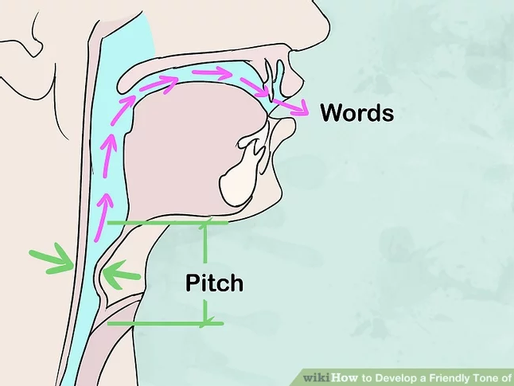Pitch is the highness or lowness of your voice, and it’s incredibly essential in speech delivery. Have you thought about how you use the pitch when delivering a speech in English? If not, that might be one big reason why you don’t sound natural – yet! We use pitch in order to express our emotions and attitude through a change in our intonation, or the tone of our voice. We also use pitch in order to express stress, or when we make certain syllables longer, louder, and higher in pitch.
.png)
Beyond speaking clearly, your pitch can influence people’s perceptions of you. Thus, the pitch is extremely important for clear communication between the speaker and the audience!
Why You Need to Control Your Pitch
In order to sound more natural in English, you need to be able to control your pitch.
This is because many non-native speakers sound a little robotic when speaking because they don’t have a lot of pitch variation in their voice. Their tone tends to sound pretty flat and they sound slightly mechanical, like a robot. This is what we call a monotone voice: not expressive, not interesting and not clear. Non-native English speakers often have this flat pitch because pitch variation is not a big part of the sound of their native language.
Pitch is created and used for different purposes in each language – and unless you’re a singer, you probably produce pitch unconsciously. In English, we use pitch variation throughout each and every sentence – for both men and women.
If you’re not creating this pitch variation in your speech, the person who is listening to you might have trouble understanding you. A native speaker’s ear is expecting to hear this pitch variation, especially on stressed words and stressed syllables.
How to Practice Your Pitch
We each have a natural pitch on which we speak. It may or may not be good for delivering speeches. If your natural pitch needs to be lowered, work on it by consciously pitching your voice lower while talking to people. Change it a half-tone at a time. Speaking with careful enunciation and in a relatively soft tone will help you to establish the change in pitch.
How do you change the pitch of your voice? First, think about your baseline pitch, which is the pitch that you have when your voice is resting. Use a nonsense sound like “da” and repeat it at your baseline pitch. Then go a step higher and repeat the sound “da” one step above your baseline pitch. Continue to go as high as you can, just to see how far the pitch of your voice can vary, and then come back down to your baseline pitch.
Familiarize yourself with the possibilities of the pitch in your own voice. It should feel natural, not forced! Even just going one step above and one step below your baseline pitch will help you create a noticeable pitch variation that you can use in order to produce word stress. Spend 3-5 minutes each day “stretching” your pitch, going a step up and a step-down, so that you start noticing how consistently you can vary your pitch.
Controlling Your Pitch for Word Stress
Taking control of your pitch in this way will help make it easier to produce pitch variations when you’re speaking and working on natural-sounding word stress and intonation.
For example, let’s look at the word “education”: ed-u-CA-tion. The third syllable is stressed, which means the vowel is longer, louder, and higher in pitch. You need to go one step above your baseline pitch to produce noticeable word stress (together with making the syllable longer and louder). When you start emphasizing those pitch variations, other people can follow what it is that you’re trying to say and they’re able to understand which syllables and words you are stressing and emphasizing on.
.png)
Beyond speaking clearly, your pitch can influence people’s perceptions of you. Thus, the pitch is extremely important for clear communication between the speaker and the audience!




